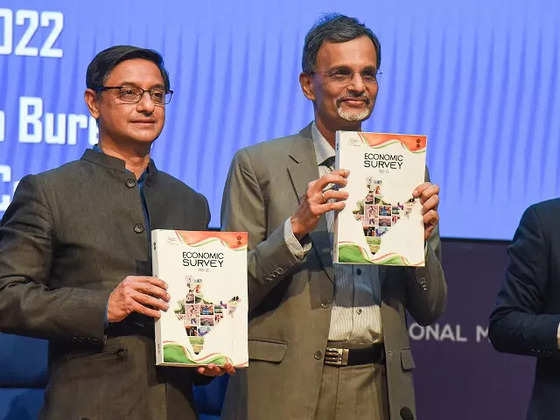Economic Survey 2023: India's GDP to Grow by 6-6.8% in 2023-2024 as per | Key Highlights
Total Views |
New Delhi, Jan 31: Finance Minister Nirmala Sitharaman on Tuesday (31 January) tabled the Economic Survey 2022-23 in Parliament. The Economic Survey projects the Indian economy to grow at 6-6.8 per cent in the financial year 2023-24.

"The actual outcome for real GDP growth will probably lie in the range of 6.0 per cent to 6.8 per cent, depending on the trajectory of economic and political developments globally," the Economic Survey said.
Further support to economic growth will come from the expansion of public digital platforms and path-breaking measures such as PM Gati Shakti, the National Logistics Policy, and the Production-Linked Incentive schemes to boost manufacturing output.
The Economic Survey says, in real terms, the economy is expected to grow at 7 per cent for the year ending March 2023. This follows an 8.7 percent growth in the previous financial year.
Despite the three shocks of COVID-19, Russian-Ukraine conflict and the Central Banks across economies led by Federal Reserve responding with synchronised policy rate hikes to curb inflation, leading to appreciation of US Dollar and the widening of the Current Account Deficits (CAD) in net importing economies, agencies worldwide continue to project India as the fastest-growing major economy at 6.5-7.0 per cent in FY23.
KEY HIGHLIGHTS
- It projects a baseline GDP growth of 6.5 percent in real terms in FY24
- India is to witness GDP growth of 6.0 percent to 6.8 percent in 2023-24, depending on the trajectory of economic and political developments globally
- The economy is expected to grow at 7 percent (in real terms) for the year ending march 2023, this follows an 8.7 percent growth in the previous financial year
- Credit growth to the micro, small, and medium enterprises (MSME) sector has been remarkably high, over 30.5 percent, on average during Jan-Nov 2022
- Capital expenditure (capex) of the central government, which increased by 63.4 percent in the first eight months of FY23, was another growth driver of the Indian economy in the current year
- RBI projects headline inflation at 6.8 percent in FY23, which is outside its target range
- The return of migrant workers to construction activities helped the housing market witness a significant decline in inventory overhang to 33 months in q3 of FY23 from 42 months last year
- The surge in growth of exports in FY22 and the first half of FY23 induced a shift in the gears of the production processes from mild acceleration to cruise mode
- Private consumption as a percentage of GDP stood at 58.4 per cent in q2 of FY23, the highest among the second quarters of all the years since 2013-14, supported by a rebound in contact-intensive services such as trade, hotel, and transport
- Survey points to the lower forecast for growth in global trade by the World Trade Organization, from 3.5 percent in 2022 to 1.0 percent in 2023


